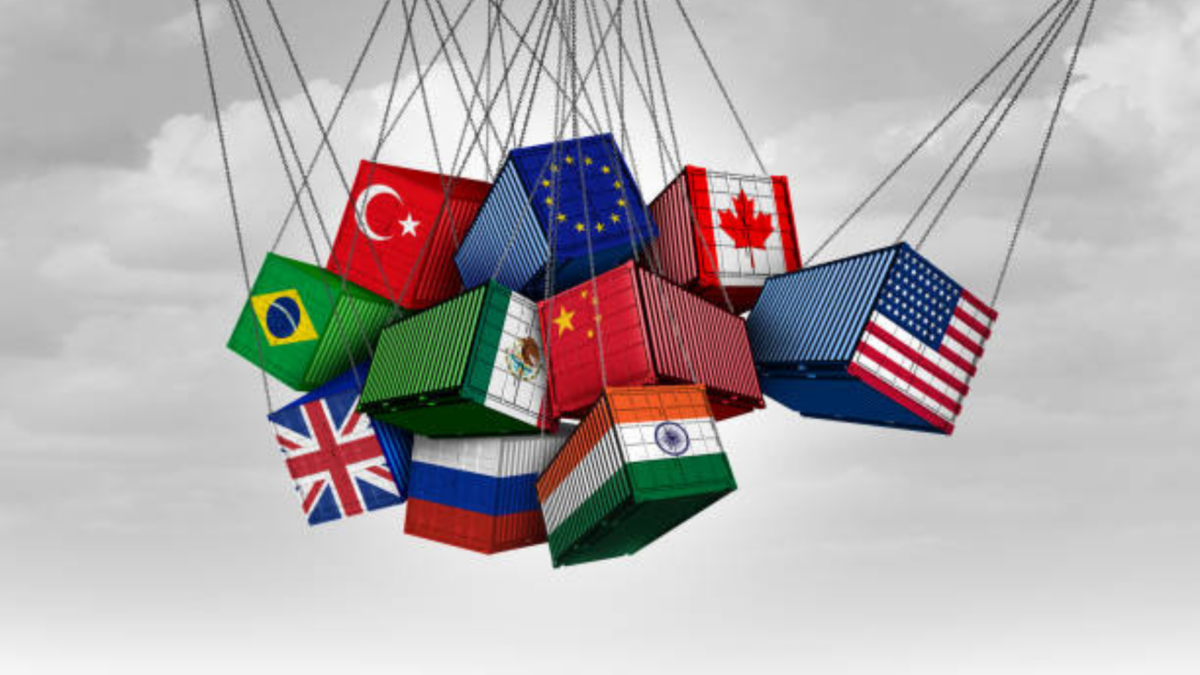Being selective, risk aware, flexible critical in today’s markets: Ninety One
The broad thesis underpinning US President Donald Trump’s tariff strategy – it was more ambitious and systematic than markets appreciated – articulated in Ninety One’s Investment Institute February update was confirmed by the April 2 “Liberation Day” announcement.
So, what did Trump do? Effective April 5, most countries faced a new baseline tariff of 10 per cent, with others subject to higher rates. After days of market turmoil, which continues, Trump paused these higher rates until July 2025, except for China, where tariffs have been raised.
With services excluded, the focus remains squarely on goods, and exemptions are limited to a narrow range of strategically or politically sensitive sectors. Even after the changes made on April 9, the just-pay-it US tariff rate on weighted imports is now estimated at 18 per cent.
A more radical trade framework
The policy objectives remain multi-faceted: to reduce bilateral trade deficits, reshore manufacturing, generate revenue and incentivise trade re-negotiations. This iteration of the Trump 2.0 administration’s trade policy is less structured and less concerned with inflationary risks.
Legal and political uncertainty
The legal basis for the tariffs – invoking the International Emergency Economic Powers Act (IEEPA) – will face court challenges, with early cases filed already.
The domestic political dynamics are fluid. While there is some movement in Congress to reclaim authority over tariffs, the legislative outlook remains uncertain.
What to watch in global trade negotiations
The next phase of international negotiations, which will continue during the 90-day pause, will be pivotal in shaping the global investment and trade landscape.
China’s response has been more hawkish than its playbook during Trump 1.0, and there remains major hurdles to an agreement, although one must be made if a shock to the global economy is to be avoided.
For Canada and Mexico, the focus will be on how the US-Mexico-Canada Agreement evolves. Mexico may be pushed to align more closely with US tariff levels. Once its election concludes, Canada will likely take a more conciliatory stance – potentially offering concessions on inter-provincial trade, critical minerals and softwood lumber while increasing cross-border investment.
The EU faces a more complex path. Trump’s demands – such as VAT repeal, relaxed tech regulation and poultry market access – are politically unpalatable and economically contradictory. While Europe was poised to introduce counter measures, it too has paused for 90 days.
Japan – having committed US$1 trillion in US investments and energy purchases – may offer agricultural concessions. India is more constrained on the agricultural front due to its powerful farm lobby.
Overall, negotiations will be messy, slow and highly idiosyncratic.
Scenario analysis: framing the investment landscape
Our base case – 60 per cent probability – likely results in a modest US recession while tariffs trend towards 15 per cent overall. In this scenario, the administration pauses reciprocal tariffs for two-three months after a disorderly market sell-off but keeps them on the table.
Inflation initially rises as higher import costs filter through, but as demand weakens, core inflation falls below two per cent by year-end. Globally, growth will decelerate, and dis-inflationary pressures will build, especially in regions reliant on external demand.
A more constructive scenario – 30 per cent probability – will see early signs of de-escalation, with tariffs settling around 10 per cent while tariffs become a second-tier concern for markets, although uncertainty does not truly revert to January levels.
In a downside scenario – 10 per cent probability –the situation will deteriorate into a full-scale trade war, with tariffs remaining north of 20 per cent. The US will entrench elevated tariffs, and key global trading partners will coordinate retaliation. Global trade will fragment into blocs. Capex collapses, GDP growth stalls and persistent inflation will create a structurally lower-growth regime.
Investment implications
As the global economy adjusts to the new tariff regime, investors will face a more fragmented policy landscape, growing regional divergence and heightened market volatility. Outcomes will differ substantially by asset class, region and sector. Flexibility, selectivity and a strong focus on fundamentals will become increasingly important in shaping risk-adjusted returns in this environment.
Rather than relying on broad market exposure, investment strategies that can identify resilient businesses, adapt to rapidly evolving conditions and manage risk dynamically will likely be better positioned.
Equities: Navigating dispersion through fundamentals and structural growth
Equity markets will become more polarised as trade frictions and shifting policy stances create uneven impacts across countries and sectors.
Domestic demand and policy insulation will be key. Markets such as China, India and the UAE, where growth is more internally driven and trade exposure is limited, may offer relative stability.
Companies with strong fundamentals will stand out. Businesses with pricing power, recurring revenues and robust balance sheets will be better placed to absorb tariff-related input cost pressures or pass them on without sacrificing demand.
Structural themes will continue to matter. Despite near-term dislocation, the long-term investment case for areas such as decarbonisation, digital infrastructure and supply chain localisation remains intact.
Regional policy divergence will require nuance. Europe and Japan may experience deflationary impulses as global trade flows reorient, while the US could contend with stickier inflation and a more constrained monetary stance.
Fixed income: Emphasis on quality, credit selection and local dynamics
In fixed income, the shifting macro backdrop will call for thoughtful positioning across duration and credit.
High-quality duration will offer diversification benefits. In scenarios where growth slows or recession risk rises, sovereign bonds and agency-backed securities will provide a useful counterbalance to risk assets.
Credit markets will become more nuanced, with sector-level differentiation sharpening as companies react differently to tariff pressures.
Emerging markets will present opportunities – and require selectivity. Countries with appreciating currencies, falling inflation and monetary space to ease could offer duration and income opportunities.
Alternatives: Flexibility, downside protection and differentiated exposures
In a less predictable policy environment, alternative strategies will play a valuable role in achieving portfolio resilience and accessing more targeted sources of return. Broader tool kits will benefit multi-asset and absolute return strategies.
The ability to calibrate exposure to equities, rates and credit dynamically and manage downside risk through hedging or options will be a key differentiator as volatility remains elevated. Flexibility will add value as capital needs to be reallocated.
This is a more complex market regime – one in which macro conditions, policy actions and asset-level fundamentals will interact in increasingly idiosyncratic ways. Against this backdrop, investment approaches that are selective, risk-aware and able to adjust with the environment are likely to be best equipped to navigate the period ahead.










